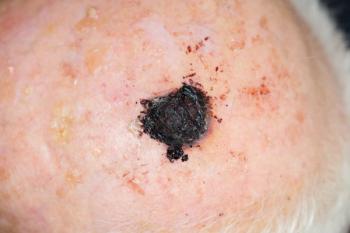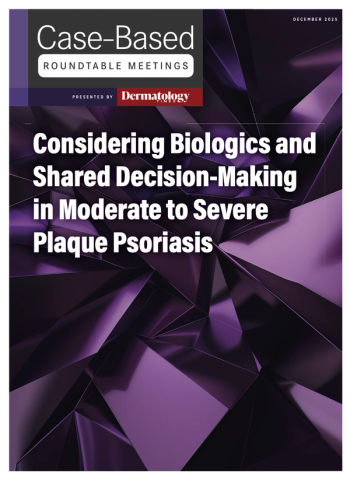
Rare Autoimmune Disorder Linked With Increased Risk of Certain Skin Cancers
Key Takeaways
- MMP patients have a heightened risk of SCC, BCC, and NMSC, particularly with severe disease, as shown in a large-scale study.
- The study analyzed data from over 117 million individuals, using propensity-score matching to compare MMP patients with controls.
Patients with mucous membrane pemphigoid face increased skin cancer risks, particularly squamous cell carcinoma, highlighting the need for vigilant screening.
Patients with mucous membrane pemphigoid (MMP) have a heightened risk of various types of
MMP is a
The research on the link between MMP and skin cancer remains murky. As the researchers of the current study explained, “The mechanisms responsible for the risk of cancer in patients with MMP are not yet fully understood, with some research suggesting that the associated serotypes may confer anything from increased to reduced risk to having no influence. Most studies have focused on anti-laminin 332 MMP, despite it being a minority among MMP patients.”1
The researchers noted that increased autoimmunity, a possible factor in cancer risk, compounded by heightened inflammation resulting in long-term tissue damage and cellular changes and repair associated with MMP, may be drivers of increased risk of certain skin cancers.
This study analyzed data on over 117 million people aged 19 years or older from over 60 healthcare organizations in the United States. Patients were propensity-score matched, resulting in approximately 3700 patients with MMP and an equal number of controls. The group was followed for up to 5 years, with data showing increased risk among SCC, basal cell carcinoma (BCC), and non-melanoma skin cancer (NMSC), especially when patients had more severe MMP.
Within these 5 years, the risk of SCC in particular was heightened, with an almost 2-fold (HR, 1.892; 95% CI, 1.211-2.955; P = .004) risk observed in the matched analysis and more than 3-fold risk observed in the crude analysis. Looking at severe disease, risk of SCC was nearly 4-fold in the crude analysis and was doubled in the matched analysis with an HR of 2.026 (95% CI, 1.091-3.763; P = .022).
Both analyses showed an increased risk of BCC (HR, 1.501; 95% CI, 1.061-2.125; P = .021) and NMSC (HR, 1.807; 95% CI, 1.373-2.378; P < .001). Similarly, the risk of BCC (HR, 2.206; 95% CI, 1.264-3.848; P = .004) and NMSC (HR, 2.171; 95% CI, 1.468-3.211; P < .001) was notably higher among patients with severe disease in the matched analyses.
Treatment of severe MMP typically comprises immunosuppressants, which could dampen the immune system’s ability to fight off cancerous cells, acknowledged the researchers, though they noted that this risk typically occurs after at least 3 years and cannot be the sole driver of increased risk of the various skin cancers.
While an increased risk of malignant melanoma (MM) was observed in the crude analysis, no increased risk was observed in the matched analysis. This finding remained consistent even among patients with severe MMP.
“Overall different risk relationships were seen between NMSC and MM,” commented the researchers. “Possible explanations might be that both MMP and NMSC involve dysfunction of the basement membrane zone and share autoimmune mechanisms affecting epithelial integrity, while MM develops from melanocytes, being less affected by the autoimmune process in MMP compared to keratinocytes.”
[This article was originally published by our sister publication,
References
- Nouri A, Olbrich H, Schmidt E, Ludwig RJ, Curman P. Increased risk of skin cancers in mucous membrane pemphigoid: a large-scale matched cohort study of 117 million US individuals. Front Med. Published online April 2, 2025. doi:10.3389/fmed.2025.1585167
- Mucous membrane pemphigoid. National Organization for Rare Disorders. Updated March 29, 2026. Accessed April 17, 2025.
https://rarediseases.org/rare-diseases/mucous-membrane-pemphigoid/
Newsletter
Like what you’re reading? Subscribe to Dermatology Times for weekly updates on therapies, innovations, and real-world practice tips.


















